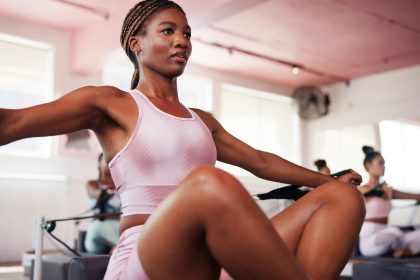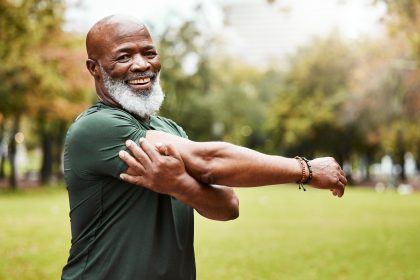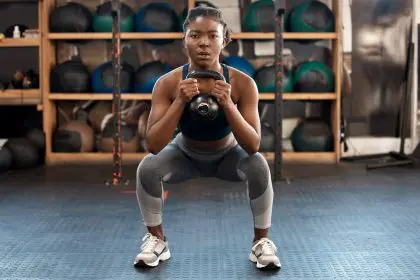Ancient practice emerges as modern solution for strength, balance, and mobility

The rising phenomenon of backward motion
In the ever-evolving world of fitness trends, retro walking has become a surprising new method, challenging the norms of traditional exercise. While it may seem like a quirky twist on a classic activity, this age-old practice has deep roots in ancient Chinese wellness traditions. What was once considered a peculiar fitness choice is now making waves, as fitness enthusiasts and health professionals alike discover the transformative potential of walking backward. It turns out that this unconventional movement could be the game-changer many have been searching for.
Breaking down the science of backward movement
The science behind retro walking goes beyond what meets the eye. Unlike traditional forward walking, backward motion requires a unique coordination of muscles and joints. When you walk backward, your body must adjust its balance, relying on stabilizer muscles that don’t get as much attention during regular walking. This demand activates the anterior tibialis, quadriceps, and other muscle groups that are often overlooked, leading to a more balanced muscular development.
Retro walking also activates the brain in an unusual way. This movement pattern engages your proprioception—the ability to sense the position of your body in space—pushing your neural pathways to work harder. This heightened awareness and coordination contribute to better balance, which is essential for reducing fall risk and improving overall motor function.
The multifaceted benefits of reverse motion
The benefits of incorporating retro walking into your fitness regime extend well beyond the surface, touching on both physical and cognitive aspects of health. Here are some key advantages:
Enhanced neuromuscular activation
Retro walking engages muscle groups that often stay dormant during traditional walking. The anterior tibialis, which runs along the front of your shin, gets a workout, as do the quadriceps and other stabilizing muscles. This type of engagement helps create a more balanced and evenly toned lower body, reducing muscle imbalances and the risk of injury.
Improved proprioceptive awareness
One of the standout benefits of retro walking is how it boosts proprioceptive awareness. Moving backward forces your body to be more conscious of its positioning in space. This heightened awareness strengthens the connection between the brain and body, improving balance and coordination over time. Enhanced proprioception is particularly valuable for older adults, as it helps reduce the risk of falls and improves overall stability.
Joint-friendly cardiovascular training
While walking backward might look a bit unconventional, it’s a joint-friendly way to boost cardiovascular health. The reversed motion puts less strain on the knees and hips compared to forward walking, making it an ideal exercise for people with joint sensitivity or early-stage arthritis. At the same time, it provides a solid cardio workout, helping to maintain heart health without the high-impact stress of running or jogging.
Increased cognitive engagement
Beyond the physical, retro walking stimulates the brain. The mental focus required to maintain balance and navigate the path promotes cognitive processing and brain activity. In fact, walking backward can be considered a cognitive exercise as well as a physical one, combining movement with mental sharpness and mindfulness. It’s a simple way to engage the brain, and it might even help slow cognitive decline as part of a balanced fitness plan.
Implementing safe practice techniques
While retro walking is packed with benefits, it’s important to approach it with caution to ensure safety and effectiveness. Here are some tips for incorporating it safely into your routine:
- Start in a controlled environment: Choose a space free of obstacles to practice. A gym or a clear outdoor path works well.
- Stay aware of your surroundings: Regular visual checks are essential to avoid unexpected hazards.
- Progress gradually: Begin with short sessions and low intensity, gradually increasing the duration as your body adapts.
- Mind your posture: Maintain a straight back and aligned posture to prevent strain or injury.
Advanced applications and variations
Once you’re comfortable with the basics, there are ways to spice up your retro walking routine and maximize the benefits:
- Add gentle inclines: Walking uphill backward increases the intensity and engages the muscles more.
- Incorporate arm movements: Moving your arms in sync with your steps activates the upper body and enhances balance.
- Vary your speed: Switching between slow and fast paces challenges different energy systems, improving endurance.
- Practice directional changes: Incorporating turns or lateral steps can take your proprioceptive awareness to the next level.
Future implications for fitness and rehabilitation
The growing interest in retro walking isn’t just a trend; it holds significant promise for future fitness and rehabilitation practices. Its low-impact nature combined with the benefits for muscular activation, balance, and cognitive function makes it an ideal addition to rehabilitation programs. Physical therapists have begun incorporating backward walking to help individuals recover from injuries, improve balance, and prevent falls. Its versatility makes it suitable for people of various ages and fitness levels, from seasoned athletes looking for a new challenge to older adults hoping to maintain mobility.
Retro walking is not just a nostalgic nod to the past; it’s a powerful tool for modern fitness and rehabilitation. The next time you take a step backward, remember that you’re not just moving in reverse—you’re moving forward in your fitness journey.













